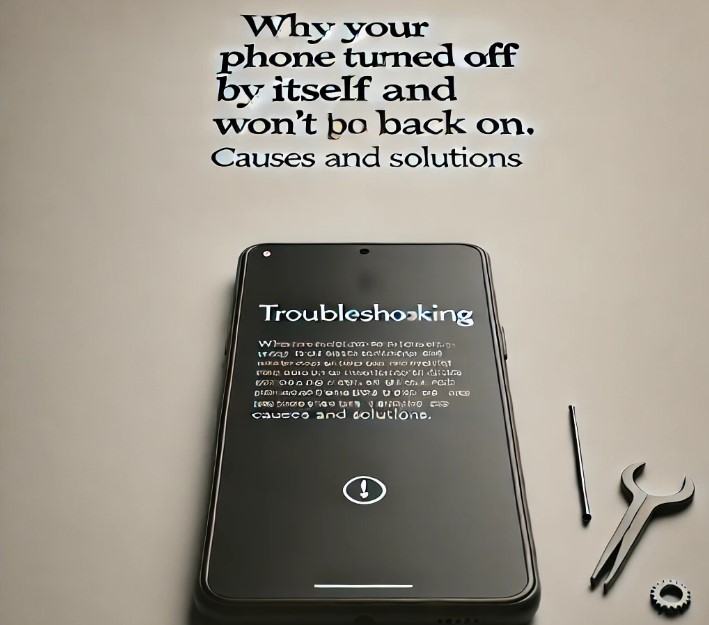Why Your Phone Turned Off by Itself and Won’t Turn Back On: Causes and Solutions
In today’s connected world, our phones are indispensable companions. From communication to navigation, these devices keep us tethered to the digital realm. However, it can be alarming when your phone suddenly turns off by itself and refuses to turn back on. This issue is more common than you might think and can happen for a variety of reasons. In this comprehensive guide, we’ll explore the potential causes, solutions, and preventive measures to ensure your phone stays operational.
Common Causes of a Phone Turning Off and Refusing to Turn Back On
1. Battery Issues
A drained or defective battery is the most common reason for a phone turning off and not powering back on. Over time, batteries degrade, losing their ability to hold a charge. Alternatively, exposure to extreme temperatures or physical damage can also impact battery performance.
2. Software Glitches
Software malfunctions, such as corrupted system files or buggy updates, can prevent your phone from functioning properly. A sudden crash can leave the operating system in a non-responsive state.
3. Hardware Malfunctions
Internal components, such as the motherboard, charging port, or power button, may have suffered damage. This can occur due to wear and tear, physical impacts, or water exposure.
4. Overheating
Phones have built-in safety features that shut them down when they overheat to prevent damage. Overheating can result from prolonged gaming, extensive use of resource-heavy apps, or leaving the device in direct sunlight.
5. Malware or Viruses
While less common, malware can interfere with your phone’s operations, causing it to shut down unexpectedly or fail to boot up.
6. Power Surge During Charging
A sudden power surge while charging can damage the phone’s internal circuitry, rendering it non-operational.
Solutions to Get Your Phone Working Again
1. Perform a Hard Reset
Sometimes, a simple hard reset can bring your phone back to life. The process varies by device but usually involves holding down specific buttons (e.g., Power + Volume Down) for several seconds.
2. Charge Your Phone
Ensure your phone isn’t simply out of battery. Connect it to a reliable charger and leave it for at least 30 minutes before attempting to turn it on. If it doesn’t work, try a different charger or cable.
3. Inspect for Physical Damage
Check your phone for signs of damage, such as cracks, bent edges, or a swollen battery. If you suspect hardware issues, consult a professional technician.
4. Boot into Safe Mode
If you suspect a software issue, try booting your phone into safe mode. This disables third-party apps and allows you to troubleshoot potential software conflicts.
5. Connect to a Computer
Plug your phone into a computer to see if it’s recognized. Sometimes, devices with minor software issues can be revived by using tools like iTunes (for iPhones) or Android Debug Bridge (ADB).
6. Perform a Factory Reset
As a last resort, a factory reset can resolve persistent software issues. Be cautious—this will erase all data on your phone. Follow the manufacturer’s instructions to perform a reset.
When to Seek Professional Help
If your phone doesn’t respond to any of the above solutions, it’s time to visit a professional repair service. Technicians have specialized tools and expertise to diagnose and fix complex hardware and software problems. Be sure to choose a reputable service center and inquire about warranty options if your phone is still under coverage.
Preventive Measures to Avoid Future Issues
1. Maintain Battery Health
- Avoid letting your battery drop below 20% or overcharge it beyond 100%.
- Use original or certified chargers to prevent power surges.
2. Keep Your Software Updated
Install updates promptly to benefit from the latest security patches and bug fixes.
3. Avoid Overheating
- Don’t expose your phone to extreme temperatures.
- Close resource-intensive apps when not in use.
4. Be Cautious Online
Avoid downloading apps from unverified sources, as they may contain malware.
5. Invest in Protective Accessories
Use a sturdy case and screen protector to minimize damage from accidental drops.
Summary and Conclusion
A phone that turns off by itself and won’t turn back on can stem from various issues, ranging from minor software glitches to significant hardware failures. By understanding the common causes and solutions, you can often resolve the issue yourself. However, don’t hesitate to seek professional help if necessary.
Preventive measures are equally important for maintaining your phone’s health and avoiding similar problems in the future. Regular maintenance, careful usage, and prompt troubleshooting can extend the lifespan of your device and ensure it’s always ready when you need it most.
Remember, your phone is a vital tool—treat it with care, and it will serve you well for years to come.

No responses yet